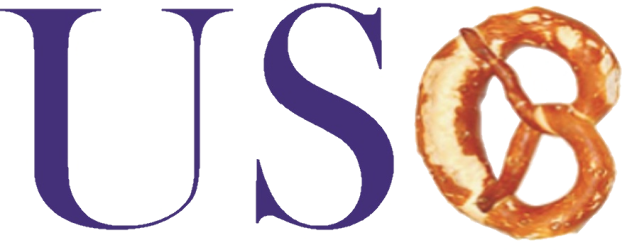Then its heart would be the central bank if a nation’s economy were a human body. And simply because the heart works to pump life-giving blood throughout your body, the central bank pumps cash to the economy to help keep it healthier and growing. Often economies require less overall, and often they want more.
The techniques main banking institutions used to get a grip on the total amount of money vary with regards to the financial status and energy of this bank that is central. The central bank is the Federal Reserve, often called the Fed in the United States. Other prominent banks that are central the European Central Bank, Swiss nationwide Bank, Bank of England, People’s Bank of Asia, and Bank of Japan.
Why the number of Money Issues
The number of money circulating within an economy affects both micro and trends that are macroeconomic. A large supply of free and easy money means more personal spending at the micro level. People likewise have a simpler time loans that are getting as signature loans, auto loans, or house mortgages.
The amount of money circulating in an economy affects things like gross domestic product, overall growth, interest rates, and unemployment rates at the macroeconomic level. The central banking institutions have a tendency to get a handle on the number of money in blood supply to accomplish financial objectives and influence financial policy. Through this short article, we have a look at a number of the typical methods main banking institutions control the total amount of profit blood circulation.
Central Banks Print More Cash
As no economy is pegged to a standard that is gold central banking institutions can raise the amount of cash in blood supply simply by printing it. They could print because much cash as they https://cartitleloansextra.com need, though you can find consequences for doing this. Just printing additional money does affect the output n’t or manufacturing levels, therefore the cash it self becomes less valuable. Because this could cause inflation, just printing more cash is not the very first selection of central banking institutions.
Central Banks Set the Reserve Requirement
Among the methods that are basic by all main banking institutions to regulate the total amount of profit an economy may be the book requirement. As being a guideline, central banks mandate depository organizations to keep a lot of funds in book from the level of web deal reports. Hence a certain quantity is held in book, and also this will not enter blood circulation. State the bank that is central set the book requirement at 9%. Then set aside $9 million to satisfy the reserve requirement if a commercial bank has total deposits of $100 million, it must. It may place the staying $91 million into blood circulation.
Once the main bank wishes additional money circulating to the economy, it could lower the book requirement. What this means is the lender can provide down more cash. If it would like to reduce steadily the amount of cash throughout the market, it may raise the book requirement. This means banking institutions have less cash to provide down and can hence be pickier about issuing loans.
In america (effective January 17, 2019), smaller depository institutions with web deal accounts as much as $16.3 million are exempt from keeping a book. Mid-sized organizations with records ranging between $16.3 million and $124.2 million must put aside 3% regarding the liabilities as book. Depository organizations bigger than $124.2 million have 10% book requirement.
Central Banks Influence Interest Levels
A central bank cannot directly set interest rates for loans such as mortgages, auto loans, or personal loans in most cases. But, the bank that is central have particular tools to push rates of interest towards desired amounts. This is called the federal discount rate) for example, the central bank holds the key to the policy rate—this is the rate at which commercial banks get to borrow from the central bank (in the United States. Whenever banking institutions have to borrow through the bank that is central a reduced price, they pass these cost cost cost savings on by decreasing the price of loans to its clients. Reduced interest levels have a tendency to increase borrowing, and also this means the amount of profit blood circulation increases.
Central Banks Participate In Open Marketplace Operations
Main banking institutions affect the level of profit blood circulation by purchasing or government that is selling through the procedure referred to as open market operations (OMO). Whenever a main bank is trying to raise the number of money in blood supply, it buys federal federal government securities from commercial banking institutions and organizations. This frees up bank assets—they now do have more money to loan. This is certainly a section of an expansionary or reducing financial policy which brings down the rate of interest in the economy. The contrary is performed in case where cash has to applied for through the system. In the us, the Federal Reserve makes use of open market operations to achieve a targeted federal funds rate. The federal funds price could be the interest of which banking institutions and institutions provide cash to one another overnight. Each lending-borrowing pair negotiates their very own price, and the common of those could be the federal funds price. The funds that are federal, in change, impacts almost every other rate of interest. Open market operations certainly are a widely used tool because they are versatile, simple to use, and effective.
Central Banks Introduce a Quantitative Easing Program
A step further and institute a program of quantitative easing in dire economic times, central banks can take open market operations. Under quantitative easing, central banking institutions create cash and employ it to purchase up assets and securities such as for instance federal federal government bonds. This cash gets in in to the bank operating system because it’s gotten as re payment when it comes to assets bought by the bank that is central. The lender reserves distend by that quantity, which encourages banking institutions to provide down more loans, it further really helps to reduce interest that is long-term and encourage investment. Following the economic crisis of 2007-2008, the financial institution of England while the Federal Reserve established quantitative reducing programs. Now, the European Central Bank and also the Bank of Japan have established plans for quantitative easing.
The Conclusion
Central banks work hard to ensure a nation’s economy stays healthier. A good way main banking institutions do this is certainly by managing the sum of money circulating throughout the economy. They could do that by affecting interest levels, setting book demands, and using available market procedure strategies, among other approaches. Obtaining the right number of profit blood circulation is vital to ensuring an excellent and economy that is sustainable.

